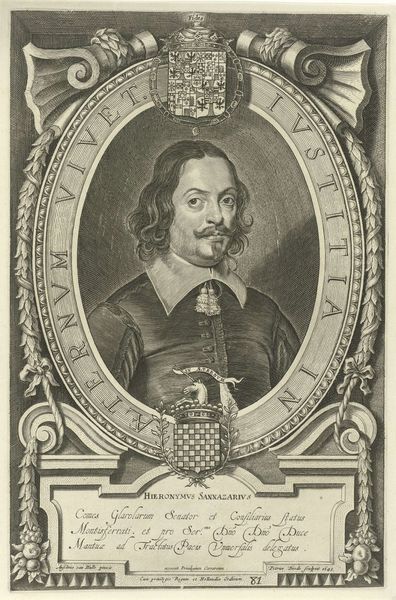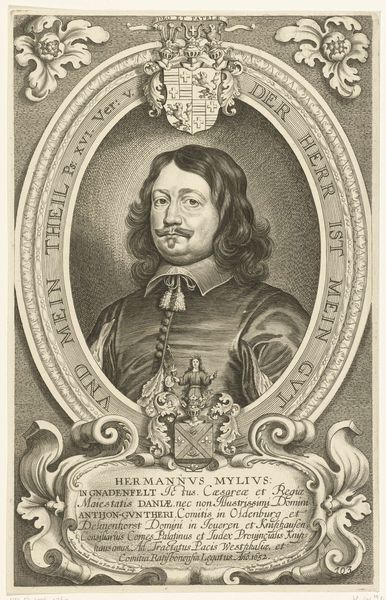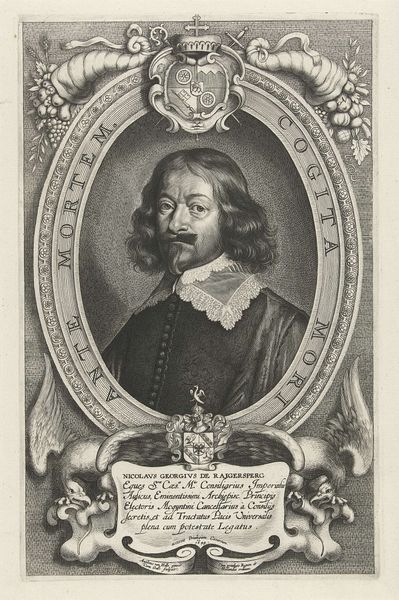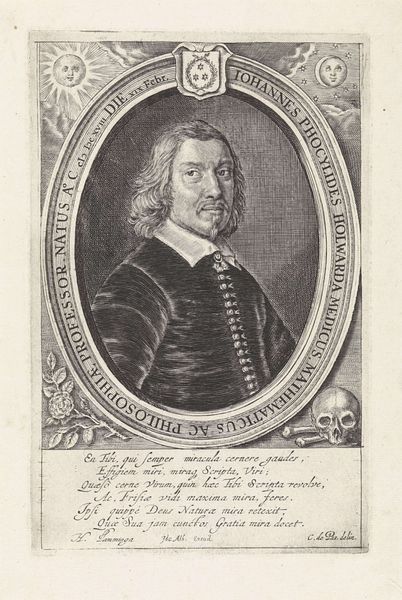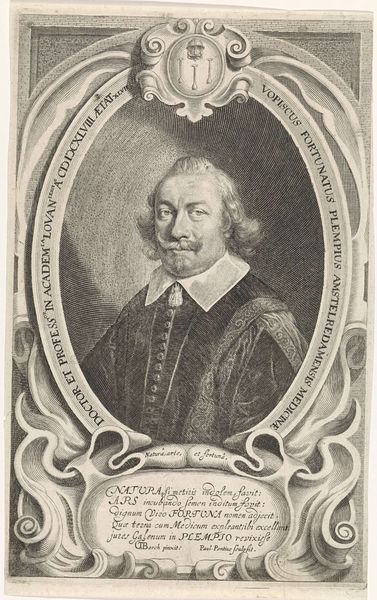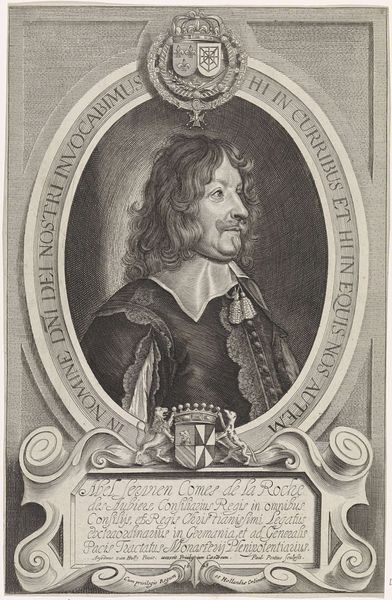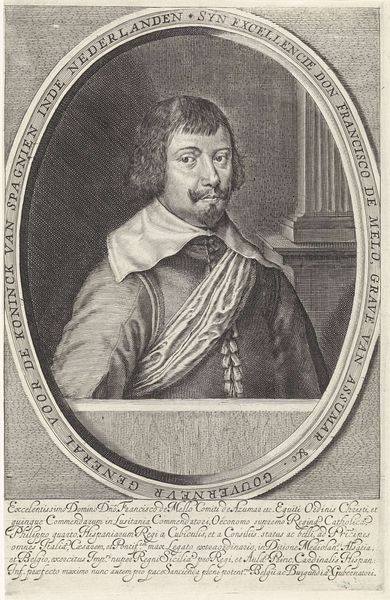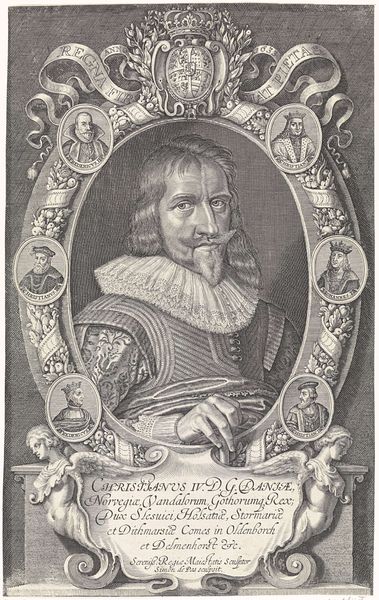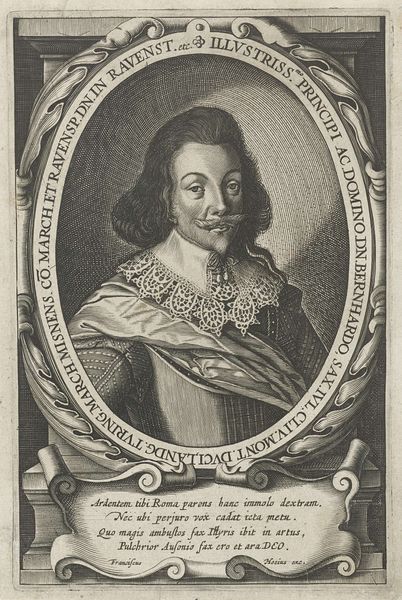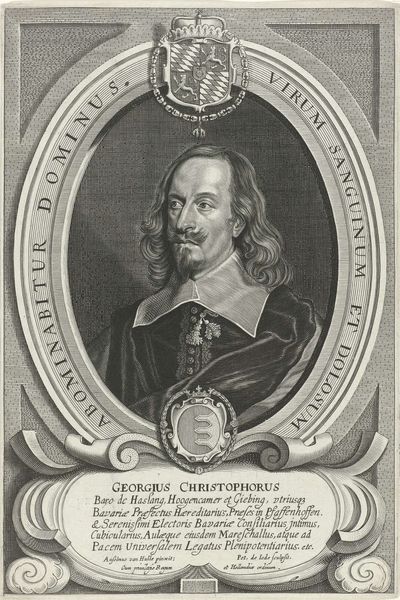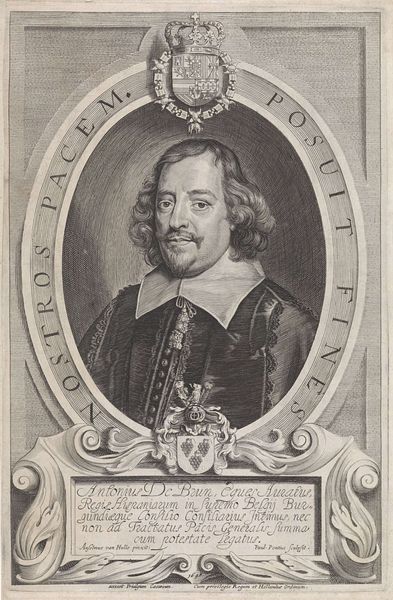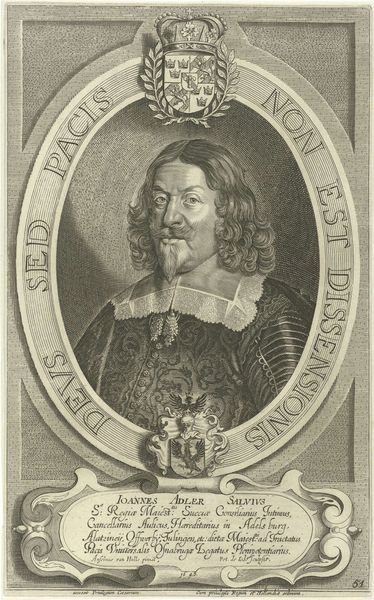
print, engraving
#
portrait
#
baroque
#
dutch-golden-age
# print
#
history-painting
#
engraving
Dimensions: height 306 mm, width 198 mm
Copyright: Rijks Museum: Open Domain
Curator: What strikes me first about this print is the incredible detail rendered through engraving, especially in the ornate framing of the portrait. The meticulous rendering gives it a monumental feel despite its modest size. Editor: Let’s dive into “Portret van Markus Otto,” created by Pieter de Jode II around 1649. As a print housed in the Rijksmuseum, its existence speaks to a broader system of artistic production and dissemination of power during the Dutch Golden Age. Consider the labor involved in producing this image – from the engraver to the publisher – and the intended audience for such a piece. Curator: True. The lines clearly delineate form but what are your first thoughts on its design? Editor: Formally, the oval portrait, surrounded by textual inscriptions and heraldic symbols, operates through stark tonal contrast and rich ornamental patterns which reinforce his social standing. However, looking closer at the use of line in the clothing, and his features gives a feeling of immediacy. The subject, identified as Marcus Otto by the inscription at the bottom, meets our gaze with purpose. The details included, such as the lace collar and elaborately adorned frame, emphasize his status. Curator: But isn't that status explicitly tied to socio-economic power and production? Each of those lines are etched with labor by Jode. And his work connects this specific portrait to larger market economies for disseminating such images and the sitter’s societal value. It moves from individual to broader Dutch trade and power. Editor: Absolutely. The print participates in the visual construction of identity. Consider the strategic deployment of classical motifs juxtaposed with Baroque flamboyance – a semiotic language designed to resonate with a specific intellectual elite while reinforcing notions of social hierarchy for all viewers. Curator: To take it further, its place as a print means its accessibility to multiple levels of society. This means he intended an idea to take hold on more than one audience member. Think about what that suggests on the role of class and influence for this time period. Editor: Precisely. It provides an excellent case study to see visual codes performatively construct and broadcast concepts tied to labor, dissemination, and social value during the 17th century. Curator: Indeed. Thinking through this portrait with materiality in mind opens up how prints can connect not only different viewers but artistic labor in relation to a sitter's personal power and reach. Editor: And appreciating its form can also inform and help us decode how these images functioned during a fascinating moment in Dutch history.
Comments
No comments
Be the first to comment and join the conversation on the ultimate creative platform.
